The most complained about advert of 2017 didn’t reinforce gender stereotypes nor was it an issue to do with race - it ‘disrespected a chicken’. The KFC advert, which received 755 complaints, saw said chicken dancing to DMX, X Gon' Give It To Ya.
In 2017 alone the Advertising Standards Agency received 29,997 complaints, primarily for content that was deemed offensive. However, out of the 10 that received the most, only two were actually removed - the chicken wasn't one of them.
Being offended by advertising - and taking the time to complain about it - isn't new but the woke world we live in today - and the instant and wide-reaching nature of social media - has only presented marketers with a whole new problem.
What is 'woke'?
The term 'woke' was added to the Oxford English Dictionary in 2017: ‘Originally: well-informed, up-to-date. Now chiefly: alert to racial or social discrimination and injustice.'
The word itself dates back to the 1800s when it simply meant, not asleep. It was in 1962 that it began to be used in a more politicised context by African-American communities and was later popularised - particularly #StayWoke which was first used on Twitter 10 years ago - by the Black Lives Matter movement, to encourage people to be aware of the oppression many still face.
Over time this has become a slang term that is far more widely used. MTV actually listed 'woke' as one of its top 10 slang words for 2016. The more mainstream the word has become, the more it has been used out of context which is why, over time, it has become synonymous with ‘being offended by everything’.
The effects are being seen across creative industries. Inbetweeners' actor James Buckley said 'it's cool at the moment to be offended by stuff' when commenting that his show wouldn't be so well received today. While the Spice Girls are reportedly re-writing their lyrics to ensure they are politically correct ahead of their upcoming tour.
The risk of causing offence
It's primarily this slang use of the word woke that is causing marketers issues. And, while the woke world as a whole may not necessarily be offended by everything, as has been implied, one of the biggest problems you face is that someone may well be.
TfL has been at the centre of many debates around marketing and what is appropriate for them to display. It has been proposed that they ban junk food advertising and they faced backlash following the 'Beach Body' campaign from Protein World. Chris MacLeod, customer director at TfL, told The Drum: “If we took account of every complaint, we might never run any advertising”.
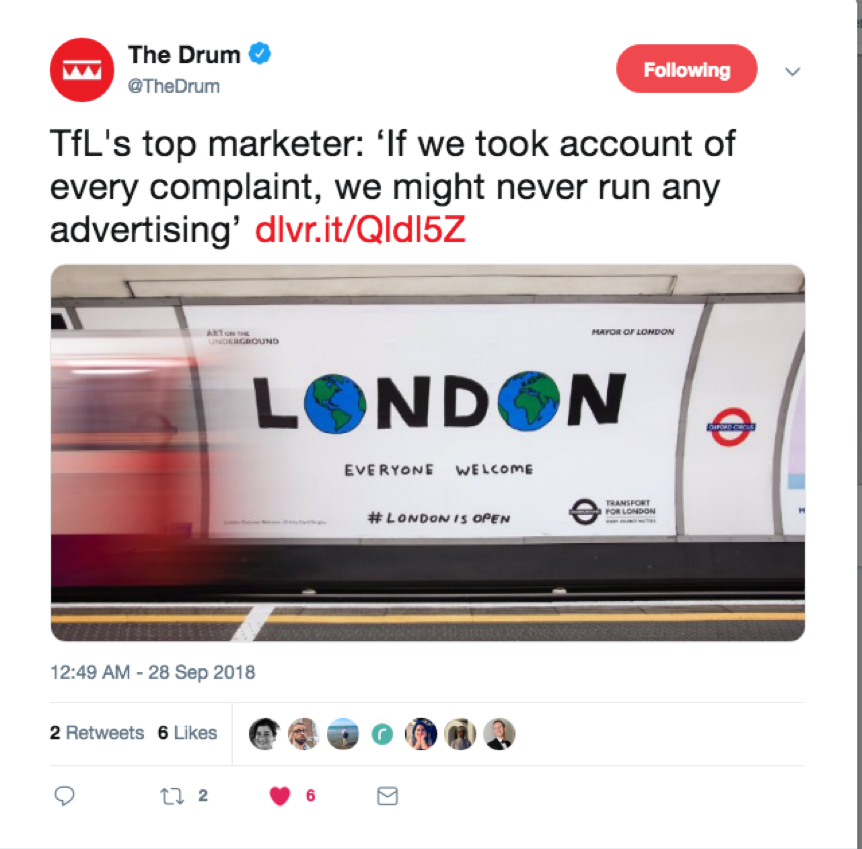
This is the same issue marketers themselves have. But, this shouldn't mean they need to create boring content or avoid taking any risks. It is more a case of common sense - is your content targeting specific demographics for ridicule or belittling a topic people are passionate about? This isn't only unfair on those it's aimed at, it could have hugely negative implications for your brand.
Creating content for the woke world
So, how do you create content for those that are ready to call out the slightest grievance?
Ensure your marketing team is diverse
Before anything else you need to look at the team creating the content - how can you possibly appeal to mothers, young ethnic women or gay men - for example, if those people aren't involved in the first place or if your ideas come from people with similar background and outlook.
A diverse team that brings together people from all walks of life will help to avoid offensive ideas getting any further than that - just an idea. But, at the same time, they'll also help to give a better understanding of different communities and offer a new perspective. As a result, far from offending certain groups of people, you'll be in a position to appeal to them.
This will hopefully avoid campaigns such as Nivea's 'White is Purity' and Co-op's call for parents to 'treat your daughter for doing the washing up' that were seen to have racist and sexist tones.
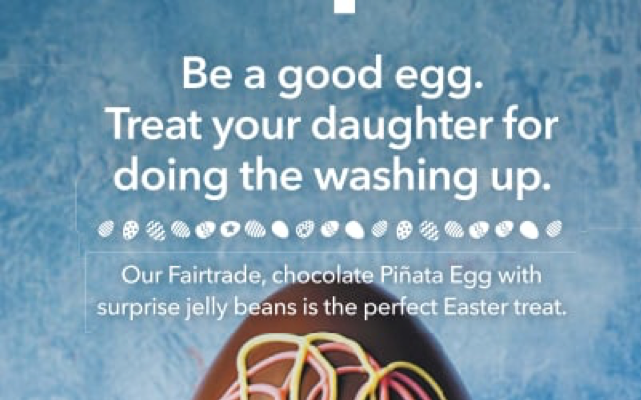
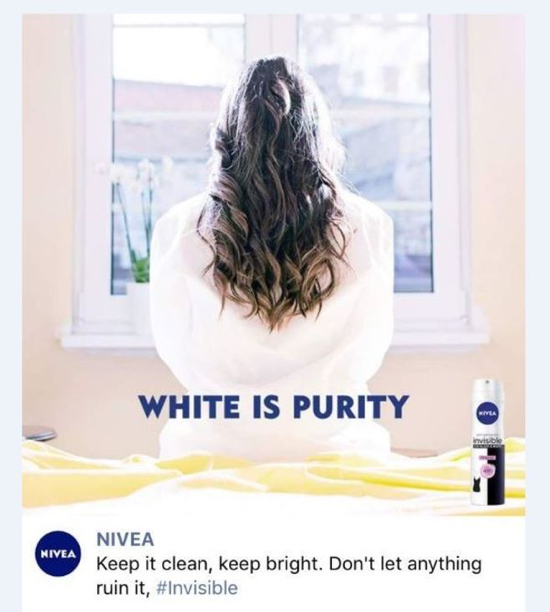
Take a step back and look at it through 'woke' eyes
H&M was called out last year for its new kids clothing range that included a green hoodie with the slogan 'Coolest Monkey in the Jungle'. It wasn't the hoodie that necessarily caused the outrage but rather their choice to have a black model wear it.
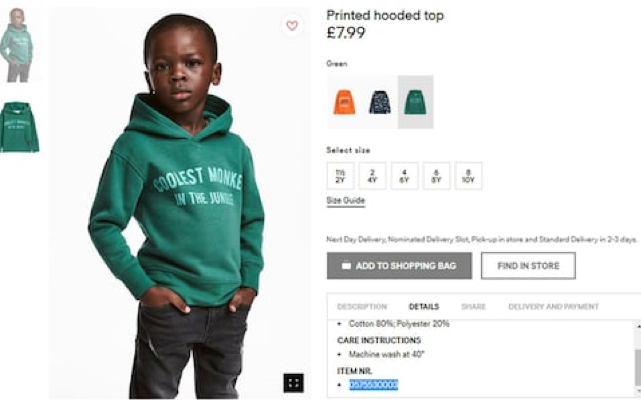
It received a huge amount of backlash and both the image and the hoodie itself were removed. But, not before stores in South Africa were vandalised and The Weekend and rapper G-Eazy pulled out of their individual collaborations with the clothing company, with the latter describing the image as 'disturbing'.
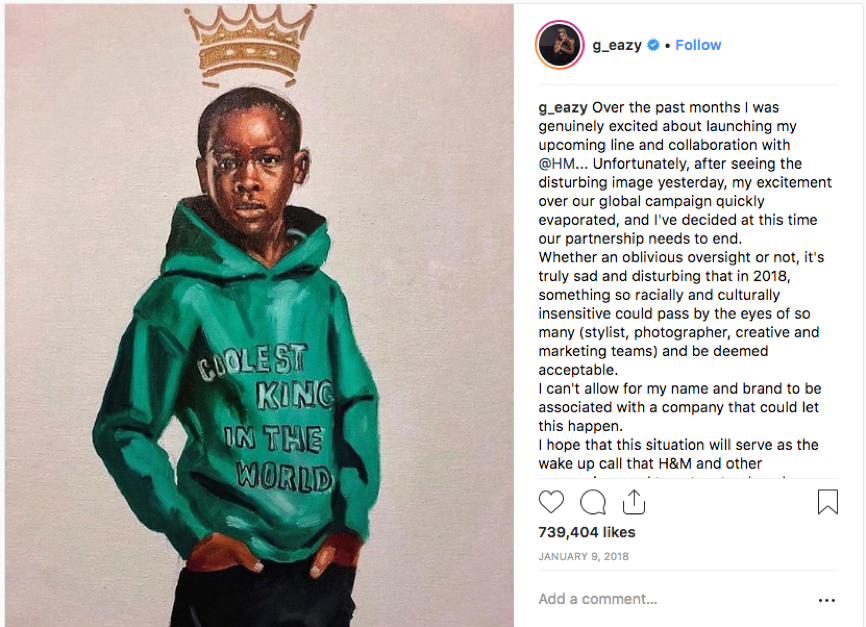
Reportedly even the young boy’s parents didn't believe this to be an act of racism and it's doubtful H&M intended it to be. But, this is why it's important to step back and look at what you are creating from the consumers perspective to avoid such oversights.
Be very careful when it comes to humour
Humour is incredibly subjective and more often than not, it is attempting to be funny that can border on offensive.
Instead of laughing at potential consumers, fellow store, John Lewis was at the butt of Lidl's joke over Christmas.
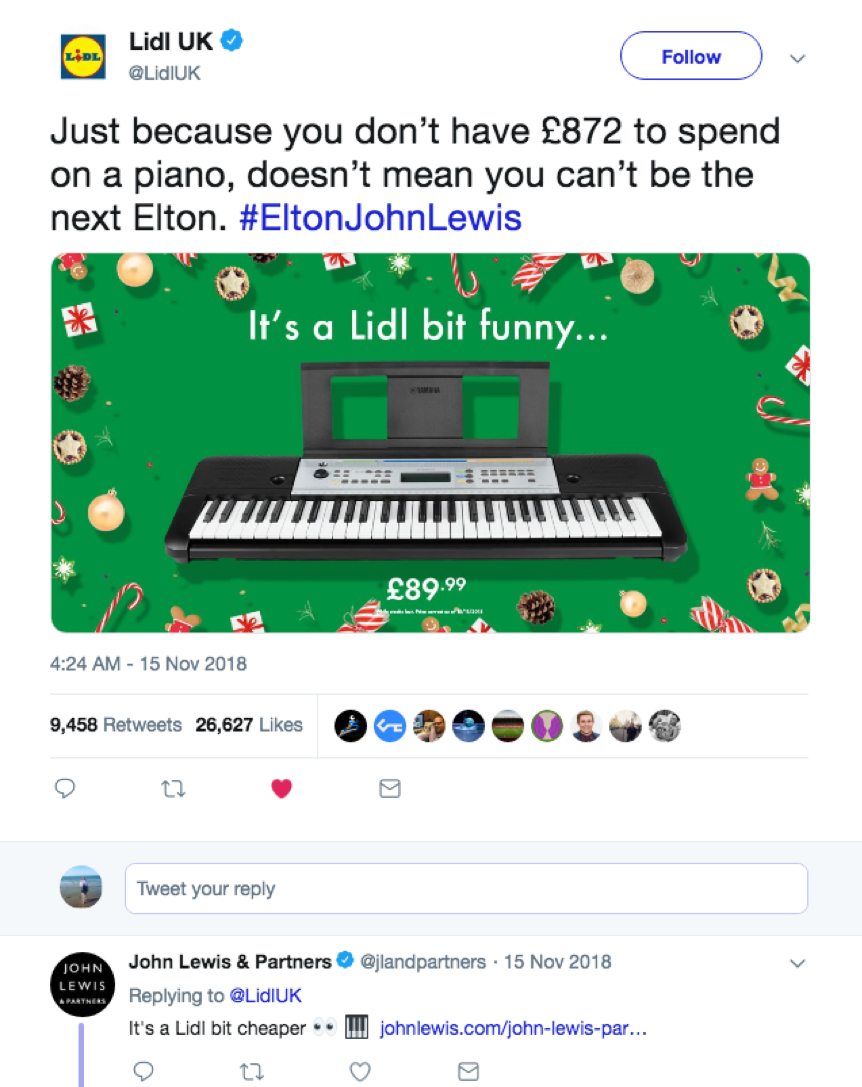
They jumped on the hashtag #EltonJohnLewis and used it as an opportunity to suggest that their own keyboard could be purchased far cheaper. John Lewis joined in with the joke, responding with 'it's a Lidl bit cheaper' and a link to their 'My First Piano' product.
Humour is the perfect way to show that your brand has a personality, so long as it is used in the right way. Be able to poke fun at yourself is better than picking on others.
Troll the trolls
Brands have been doing a really good job on social media recently of calling out the hypocrisy of some of the pre-woke generation. You know the type. These are people who claim anyone who stands up to outdated views is a 'snowflake’, when they themselves are outraged by the most insignificant things.
Food chains including McDonald’s, Greggs and Pizza Hut have been particularly witty.
Off the back of Piers Morgan's outrage at Greggs vegan sausage roll, all three brands used it as an opportunity to not only troll him but market their own vegan products.
When Morgan tweeted: “Nobody was waiting for a vegan bloody sausage, you PC-ravaged clowns,” Greggs simply hit back with: “Oh hello Piers, we've been expecting you.”
What followed was a clever example of marketing by several brands.
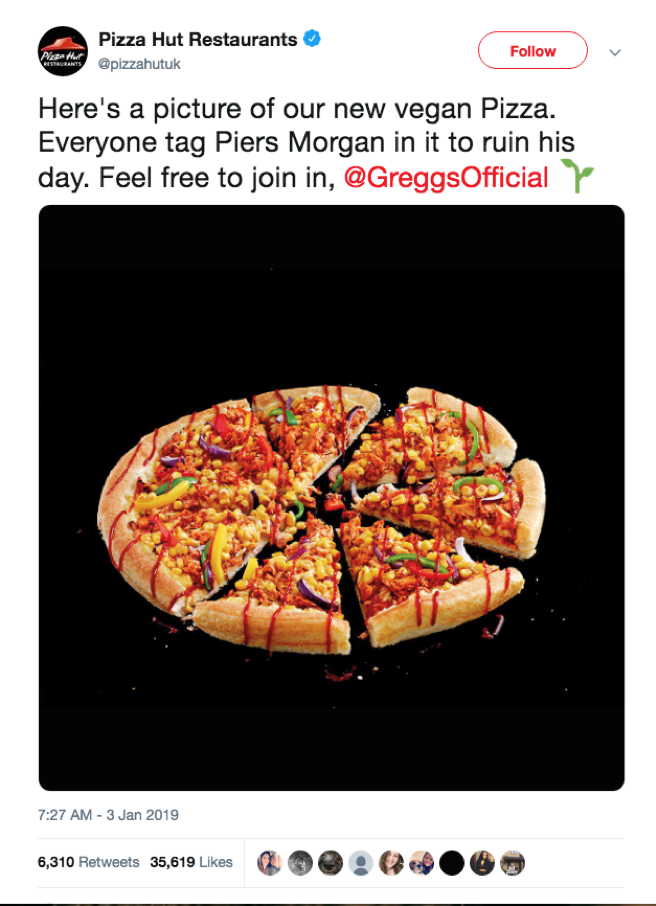
The best way to do this is to be reactive - some of the most successful marketing has been in response to something, that has taken no time, money or thought. The opportunity has just presented itself and brands have been quick enough to jump on it.
Subvert stereotypes
Brands have the perfect platform to change the way certain groups are thought about. The British Army, for example, used its most recent recruitment ads to show that this generation has exactly the skills they are looking for.
They took negative descriptions used for Gen Z such as 'phone zombies,' 'selfie addicts' and 'me me me millennials' to show that they needed their focus, confidence and self-belief. Rather than being a weakness, these are seen as strengths.
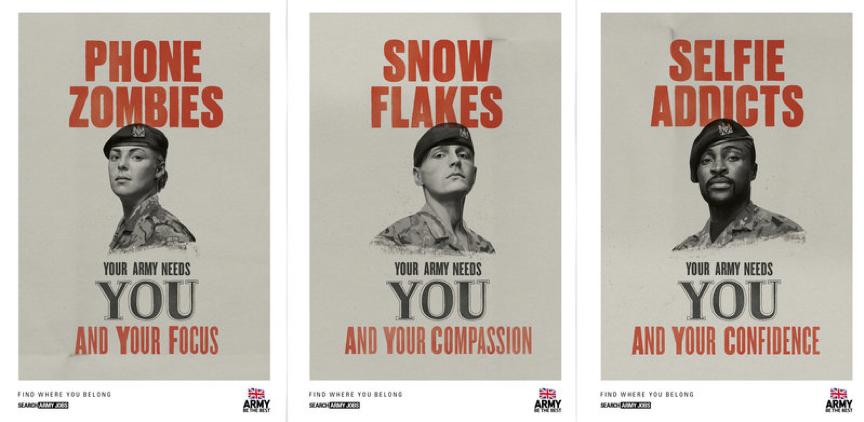
This is also the perfect way to point out how ridiculous and unfair many long-held stereotypes are.
Be controversial for the right reasons
Questionable content isn't always an oversight. You know what they say, there's no such thing as bad publicity. No doubt some content is created specifically to shock and ensure it is noticed and talked about it.
But, is it worth it to cause offence that genuinely hurts feelings and helps to cement stereotypes and negative opinions? Don't be controversial for the sake of it - do it to open eyes that are still closed to the issues that are faced today.
Iceland, for example, created an anti-palm oil advert that was banned because it was deemed too political.
The supermarket worked with Greenpeace on the animated festive campaign which portrayed the destruction of an orangutan's rainforest home as a result of palm oil.
Although it wasn't allowed to be shown on TV, it was actually viewed more than 65 million times online, gaining even wider awareness for the cause.
Get behind a good cause
On a near daily basis, we are faced with images of our oceans filled with plastic, turtles suffocating from beer can rings constricting around their neck, polar bears facing extinction due to melting ice caps - to name just a few.
We want change and we are a generation empowered to make sure it happens. We are determined to fight for equality, reduce our plastic and make steps towards reversing climate change.
So, appeal to the woke generation by helping to make these changes, to the issues that really matter to them, happen. Not everyone is aware of the severity of the issues that face us today - brands can use their platform to help with awareness while building their own in an ethical way.
McDonalds teamed up with Mother Pukka, a mummy blogger who campaigns for flexible working with Flex Appeal. Writing on Instagram, Anna Whitehouse, said: "We started looking into companies who you guys had told us had good flexible working policies – to help us take our message further. The one that kept coming up was McDonald’s... Firstly, we’ll be working with them on our ‘Let’s Talk About Flex’ events. The aim is to spread the message and get offline and into real life with this." This would start with free events at McDonald’s restaurants that included one-to-one meetings with flexible working experts.
Similarly, Marigold worked with Coppafeel to help raise awareness of breast cancer by including a boob-checking guide with their gloves.
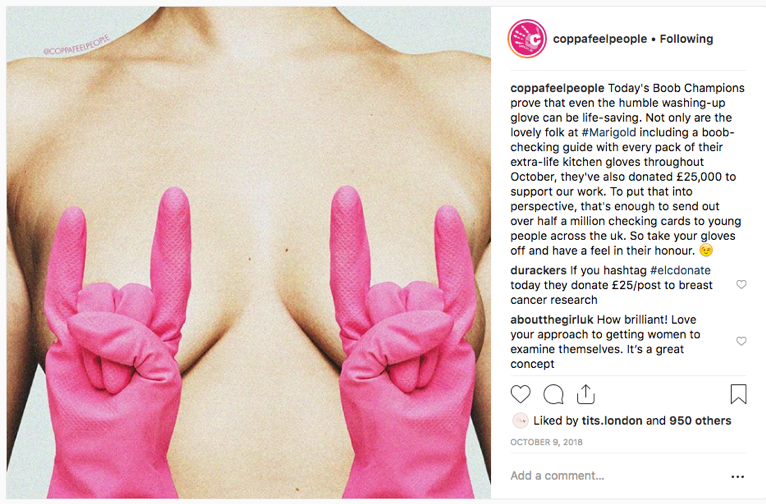
Meanwhile, Adidas released a collection made from recycled ocean plastic and has committed to only using recycled plastic by 2024. They are just one of many brands that are now looking at making their products (and not just the marketing of it) more ethical and sustainable.
How to make this work for you:
- Support a cause you truly believe in
- Pick one that fits perfectly with your own branding
- Consider the best way for you to support them
- Look for new ways to work together
- Team up with a cause that is currently under the radar
Should your brand have a social voice?
Gillette, known for their slogan 'The Best a Man Can Get' and selling it's customers the ideal of manhood have released a new advert in response to #MeToo that now challenges toxic masculinity. The brand has been described as becoming 'woke' and having 'co-opted a social movement.'
This desire to be socially responsible is believed to have stemmed from Nike's support of civil rights and the Black Lives Matter campaign which featured American footballer Colin Kaepernick and the slogan 'Believe in something, even if it means sacrificing everything.'
On the whole, response was positive. However, a lot of the negativity was due to what has become known as woke-washing - cashing in on social injustice. Using this support of the issues we are passionate about to try and sell us their product.
Part of this comes from the brands that try to jump on this and get it really, really wrong. Such as the Pepsi advert that saw Kendall Jenner handing a can of the drink to a police officer, during a protest - completely undermining the Black Lives Matter movement in the process.
YouGov recently shared their whitepaper around how consumers feel about brands expressing opinions on social issues. It found that more than half of Brits (57%) think brands should have a point of view with the main reasons being that they want to trust the brand and believe they should behave responsibly. However, 17% definitely agree that they are simply trying to exploit them.
However, what we do know is that woke needs to be more than a word that is hashtagged at every opportunity on social media and banded around without context. It must be a mindset that as a result will help to bring about change. We are already making positive steps by calling out injustice and if brands are on board with this - and do it in the right way - we will only see these changes happen quicker.
Sign up for our monthly newsletter and follow us on social media for the latest news.
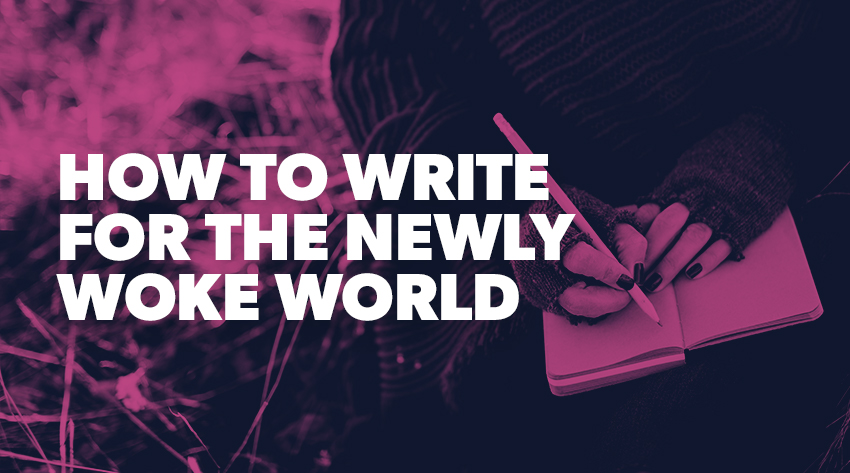




 Proudly part of IPG Mediabrands
Proudly part of IPG Mediabrands